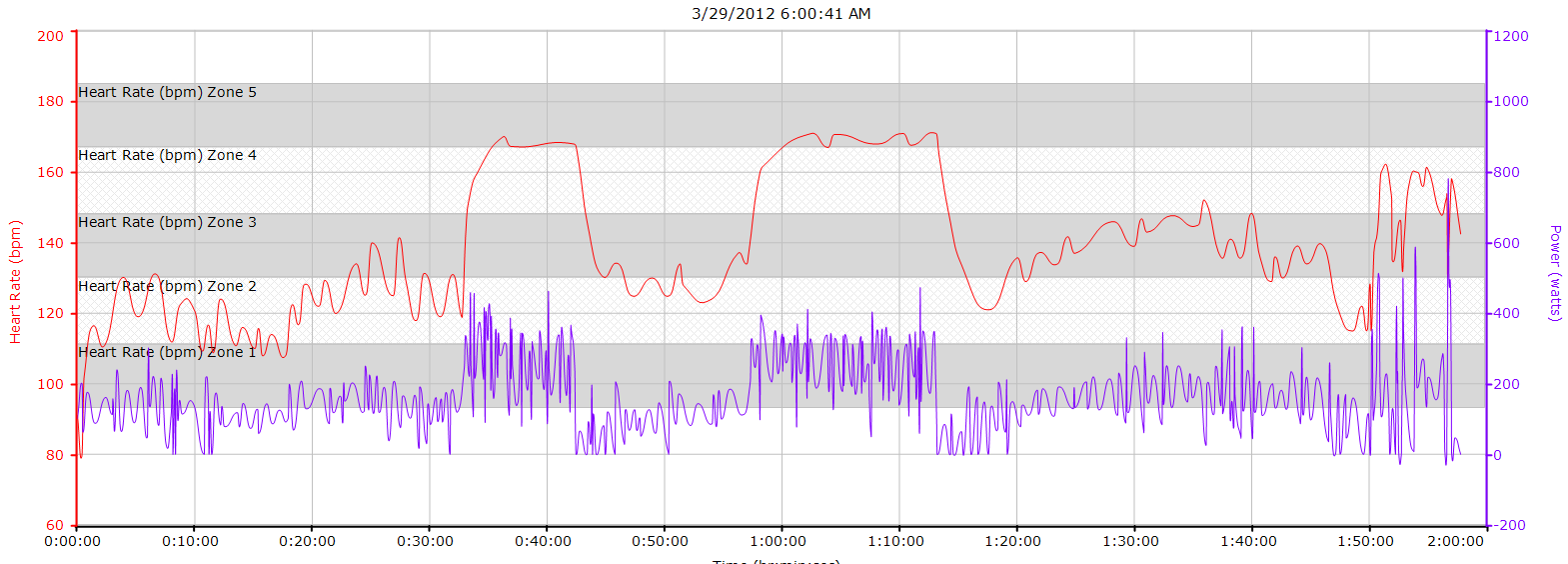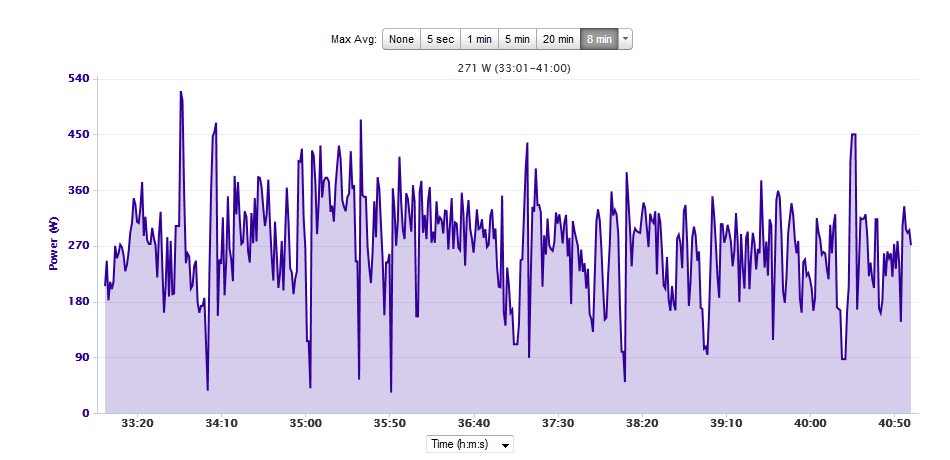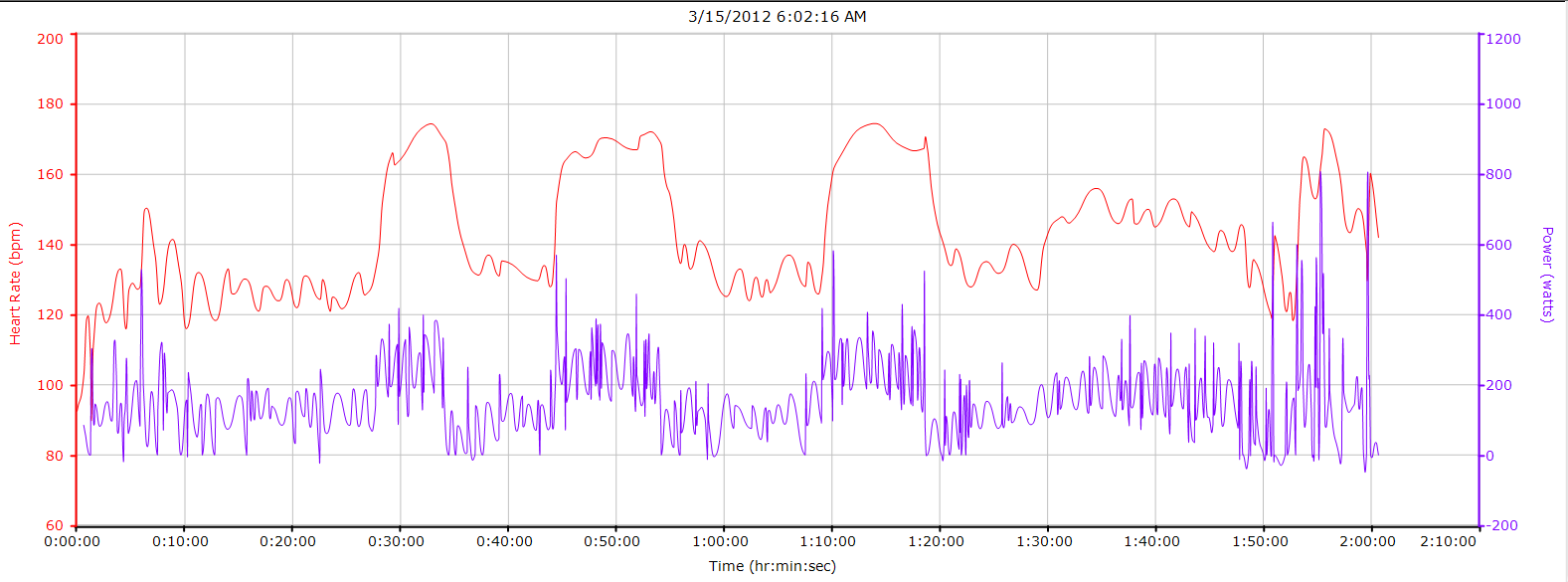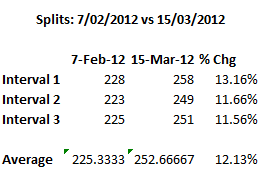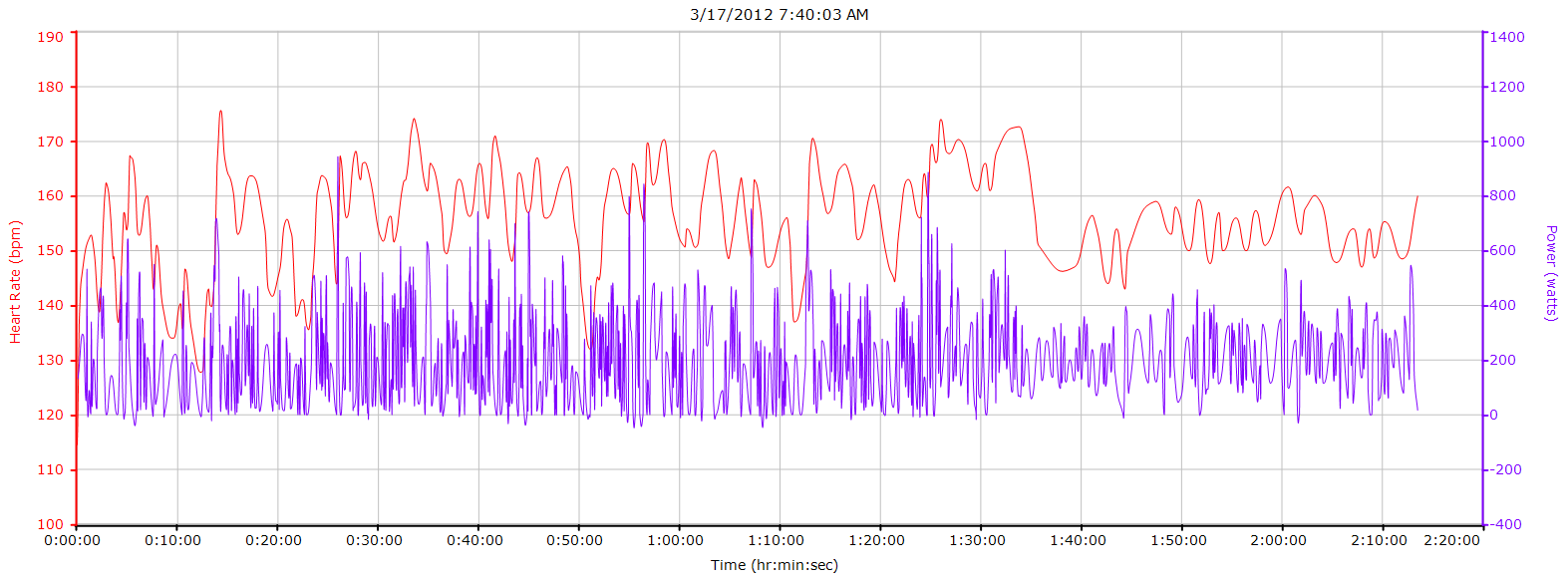Hey everyone,
I feel like my training has progressed well over the last couple of months. Two weeks ago, I wrote that I would try to increase the time at which I could maintain 160-165 bpm to 60 minutes (2 x 30 minute intervals). I managed to complete this goal last Thursday without too much difficulty, though I was getting tired during the last 10 minutes of the second interval:
You can see that there were a couple of blips where I lost focus and my HR dropped below 160, but in the end, the intervals averaged out to 163 bpm and 164 bpm, and I’m satisfied with the way things turned out. This week is a transition week for me, so I’ll still be riding, but the workouts will be unstructured and “fun” to allow me to rest my legs and clear my mind before the next phase of training. The week after that, I plan to conduct a lactate threshold (the heart rate at which the activity becomes anaerobic) test, which involves doing a 30 minute TT, with the average HR of the last 20 minutes being the approximation of LT. I don’t have any big expectations for this test, but I think it will be at least 164 bpm because I know I can do that given the picture above. The first of the two intervals I did was pretty easy, and not the lung-busting effort that you’d produce during a TT. However, I haven’t done a time trial since Fayetteville, so I might not be able to get my HR that high, but I think 168 bpm would be a reasonable expectation or even maybe 170 bpm if I can get it that high.
One of the important things about LT is that cycling involves several different types of endurance: aerobic endurance, anaerobic endurance, and muscular endurance (there might be more to the list). Throughout the offseason, I’ll need to isolate these different types of endurance and create workouts to develop each one. LT is the point at which physical activity becomes anaerobic and lactic acid begins accumulating in the muscles. At this point, the body can only hold so much lactic acid before the muscles fail – and it’s crucial in bicycle racing to out-endure your opponents at critical moments during a race, such as in the final moments of a breakaway. I noticed this year that I had trouble staying with the pack during hard efforts, and this is one of the things I would like to work on before returning to racing. Therefore, in order to tailor workouts to fit my goals, I’ll need to know my LT in order to separate workouts (or parts of workouts) into aerobic/anaerobic segments.
I don’t have any plans to do anaerobic exercises yet, because it’s important to build a good amount of basic aerobic endurance during the offseason, so you’ll have enough endurance to work on high-intensity anaerobic workouts later on. Last year I didn’t ride much in the winter, and I think one of the reasons I ran into overtraining problems in the Spring was that I hadn’t built up enough endurance in the offseason. Anyway, for the next month my goal is to increase the amount of time I can ride non-stop at 160+ bpm (or whatever turns out to be right under LT). I’ll keep the total amount of time above 160+ bpm, but I’ll gradually shift the distribution of time of the 2 intervals more towards the 2nd interval. For the next 4 weeks (2 interval workouts per week):
LT Test: 1 x 30 min
1 x 20 min and 1 x 20 min
1 x 20 min and 1 x 25 min
1 x 25 min and 1 x 25 min
1 x 25 min and 1 x 30 min
1 x 30 min and 1 x 30 min
1 x 25 min and 1 x 35 min
1 x 20 min and 1 x 40 min
(Transition week + 2nd LT Test)
I would eventually like to be able to ride nonstop right below my LT for an hour. I think realistically that will be possible at the end of November. I’m planning to do long weeks for base training in November and December (10-11 hours/week), which aren’t long by competitive standards, but they’re longer than what I did last year and what I believe to be a reasonable goal for the offseason.
Weights
Weight training has continued as usual:
Squat: 5×5 195 lb
Deadlift: 1×5 185 lb
Bench: 5×5 130 lb
Overhead press: 5×5 80 lb
Weighted Dips: 5×5 40 lb
Barbell Row: 5×5 125 lb
Weighted Pullups: 5×5 2.5 lb
Power Clean 3×5 90 lb
I’m planning to do most of my gains this Winter and next Summer when racing is light. I realized this year that it’s really hard to make gains during Spring when all the races are going on.



